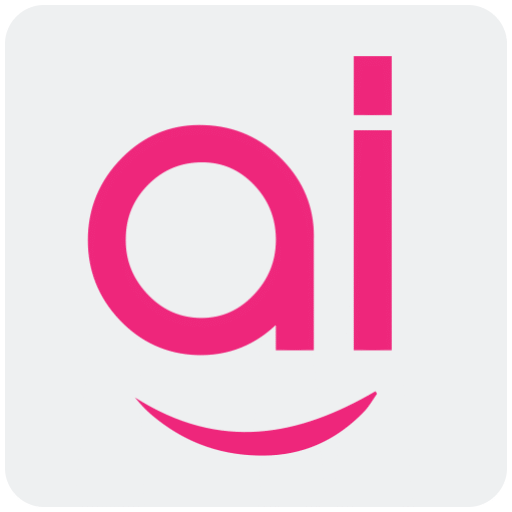Are traditional financial tools keeping pace with the complexity of healthcare operations?
Healthcare finance has reached a point where spreadsheets and legacy accounting systems can no longer handle the scale and unpredictability of hospital operations.
Rising costs, fluctuating patient volumes, and reimbursement uncertainties make it increasingly difficult for finance teams to maintain visibility and control across departments.
AI is reshaping healthcare finance, moving from a promising experiment to an indispensable part of daily operations.
The proof?
Here, it’s: According to Grand View Research, the global AI in healthcare market exceeded USD 22 billion in 2024 and is projected to grow at a CAGR of 36.4% through 2030. Within this growth, financial forecasting and cost optimization are among the most rapidly adopted applications.
Hospitals are now leveraging AI-driven systems capable of processing millions of transactional and operational data points, continuously, securely, and in real time, turning complexity into clarity.
Let’s explore the insights this article provides on AI for Financial Forecasting and Cost Optimization in Hospitals.
- Introduction
- Why Hospitals Are Turning to AI for Financial Forecasting
- How AI Enhances Cost Optimization in Hospitals
- Technical Challenges in AI Deployment for Healthcare Finance
- Strategic Pathways for Implementing AI in Healthcare Finance
- Real-World Impact: Measurable Outcomes
- The Future of AI in Healthcare Finance
- Final Thoughts: CaliberFocus Perspective
Why Hospitals Are Turning to AI for Financial Forecasting
At its core, AI in healthcare finance uses machine learning (ML) and predictive analytics to transform raw data into forward-looking insights. Rather than relying on retrospective reports, healthcare leaders can model future financial performance with dynamic precision.
From a technical standpoint, AI forecasting models rely on three essential data layers:
- Operational Data – patient admissions, procedure volumes, staffing schedules.
- Financial Data – revenue cycle KPIs, payer mix, claims timelines, and cost centers.
- External Indicators – regional demand trends, seasonal fluctuations, and reimbursement policies.
By training algorithms on these multidimensional datasets, models like Gradient Boosted Regression Trees or Recurrent Neural Networks (RNNs) can predict revenue and expense trajectories weeks or even months in advance.
For example, a predictive model can flag when surgical volume is likely to decline due to regional flu trends, allowing finance teams to rebalance budgets and shift resources preemptively.
This transition from reactive reporting to proactive forecasting is redefining how hospitals maintain financial resilience in volatile market conditions
How AI Enhances Cost Optimization in Hospitals
Cost optimization in the hospital isn’t about blanket budget cuts; it’s about data-driven precision. AI enables that precision by correlating financial data with clinical and operational performance metrics. At CaliberFocus, our AI cost-optimization architecture is built on five interlocking modules:
- Revenue Cycle Intelligence
Machine learning models analyze denial codes, payer behaviors, and claim rejections to predict bottlenecks. NLP enhances coding accuracy by interpreting unstructured clinical notes, reducing revenue leakage. - Resource Utilization Analytics
AI models integrate data from EHRs, ERP systems, and IoT-enabled medical equipment to assess utilization patterns. Hospitals can identify underused assets or departments operating above cost thresholds in real time. - Staffing and Labor Optimization
Predictive scheduling engines use historical census data and clinical workload trends to recommend optimal staffing levels. These models often reduce overtime costs by 10–15% while improving shift balance. - Supply Chain Automation
AI-based demand forecasting aligns procurement with patient volume predictions. Deep-learning models track consumption cycles and flag reorder triggers, minimizing waste and stockouts. - Financial Simulation Engines
These systems allow CFOs to run “what-if” simulations, testing the financial impact of regulatory changes, pricing adjustments, or payer contract renegotiations.
Each component operates within a unified data pipeline, governed by secure APIs and automated validation layers that ensure interoperability across EHR, RCM, and ERP systems. This integrated approach powers data-driven hospital operations that improve efficiency and cost-effectiveness.
Technical Challenges in AI Deployment for Healthcare Finance
Despite its promise, deploying AI in healthcare finance presents a unique set of challenges that require deep technical and regulatory understanding:
- Data Fragmentation: Financial and clinical data often exist in silos, making it difficult to create unified training datasets. ETL (Extract-Transform-Load) pipelines and FHIR-compliant APIs are critical to achieve interoperability.
- Model Interpretability: Finance executives require explainable AI (XAI) to justify forecasts. At CaliberFocus, we use SHAP (Shapley Additive Explanations) and LIME (Local Interpretable Model-Agnostic Explanations) to ensure transparency.
- Regulatory Compliance: Every AI workflow must adhere to HIPAA, HITECH, and SOC 2 Type II standards. We embed compliance validation checkpoints within each model’s lifecycle.
- Scalability: Real-time financial analytics demands cloud-native infrastructure. Kubernetes-based orchestration enables scalable inference while maintaining data isolation.
- Human-AI Collaboration: Models perform best when continuously fine-tuned with clinician and finance expert feedback, forming a human-in-the-loop (HITL) framework.
By addressing these challenges systematically, healthcare organizations can build AI ecosystems that are not only powerful but also auditable and sustainable.
Strategic Pathways for Implementing AI in Healthcare Finance
Based on our implementation experience, a technically robust AI finance strategy should follow five disciplined stages:
- Data Readiness and Governance: Establish data dictionaries, metadata standards, and anonymization protocols.
- Model Design and Validation: Use cross-validation techniques to avoid bias and overfitting; align KPIs with hospital finance metrics.
- Integration Layer Development: Build secure API connectors between EHRs, ERPs, and RCM tools to enable seamless data flow.
- Pilot Deployment and ROI Tracking: Begin with a small-scale use case (e.g., claims forecasting) to validate model accuracy and measure tangible ROI within 3–6 months.
- Continuous Learning Framework: Deploy MLOps pipelines for automated retraining and monitoring.
This step-by-step framework ensures that AI integration remains aligned with both technical and strategic goals.
Real-World Impact: Measurable Outcomes
Healthcare systems that have integrated AI into their financial operations are already reporting measurable improvements:
- A large Midwest hospital network achieved 28% faster revenue forecasting after deploying ML-driven models integrated with its ERP.
- A multi-hospital system in Florida reduced administrative costs by 22% through AI-based automation of claims and billing workflows.
- Another provider implemented predictive staffing analytics, saving nearly $2.4 million annually in overtime expenses.
These outcomes reflect not just technical success but an operational shift toward sustainable, data-centric decision-making.
The Future of AI in Healthcare Finance
Looking ahead, the next phase of AI in healthcare finance will center around autonomous financial agents, systems capable of self-optimizing forecasts and dynamically reallocating budgets based on real-time operational metrics.
Emerging advancements such as Generative AI will further accelerate report automation, allowing finance teams to query systems conversationally for real-time insights. Combined with blockchain-based audit trails, the future of healthcare finance is moving toward full transparency, automation, and predictability.
At CaliberFocus, we’re building this future by combining technical rigor with domain-specific experience, helping hospitals transition from static spreadsheets to intelligent, adaptive financial ecosystems.
Final Thoughts: CaliberFocus Perspective
Financial forecasting in healthcare is no longer a quarterly exercise, it’s a continuous, AI-driven process. Hospitals that adopt intelligent automation gain agility, cost control, and clarity in a landscape where margins are narrowing.
At CaliberFocus, our AI solutions are built with the healthcare domain in mind. From designing compliant data pipelines to developing explainable predictive models, our team ensures that every implementation strengthens both financial performance and governance integrity.
Ready to reimagine your hospital’s financial future?
Partner with CaliberFocus to implement secure, scalable, and outcome-driven AI in healthcare finance.
FAQs
AI models analyze historical and real-time financial, operational, and external datasets to identify nonlinear patterns and seasonality. This enables more precise revenue and cost predictions than traditional linear forecasting tools.
Yes. AI detects inefficiencies in staffing, supply chain, and billing processes, recommending optimized workflows that can reduce operational costs by 15–25%.
Most hospitals achieve measurable ROI within 6–12 months, depending on data maturity and process automation scope.
We embed HIPAA, HITECH, and SOC 2 Type II compliance into every phase, from data ingestion to model deployment, ensuring full traceability and auditability.
Start with a focused use case, such as claims forecasting or staffing optimization. Our team provides a data readiness assessment and develops a scalable pilot aligned with measurable KPIs.




